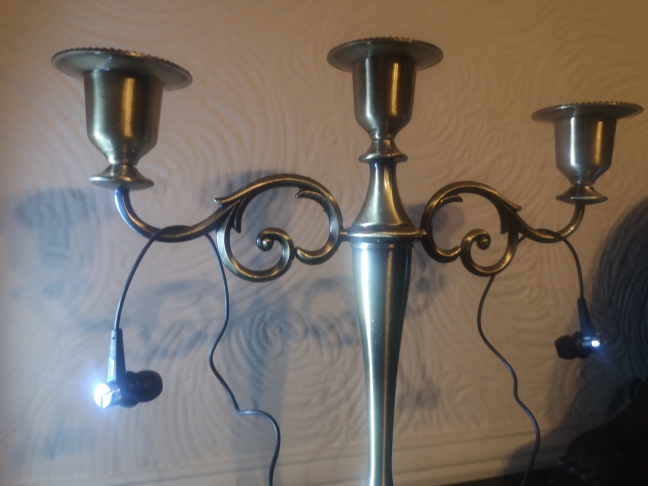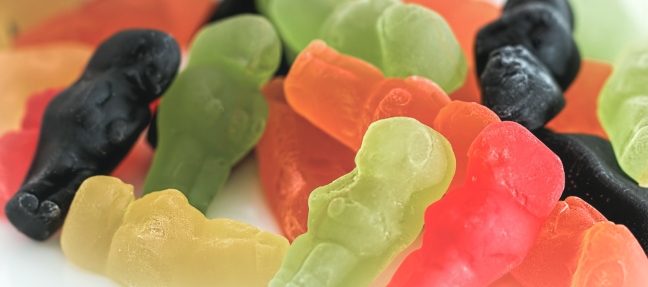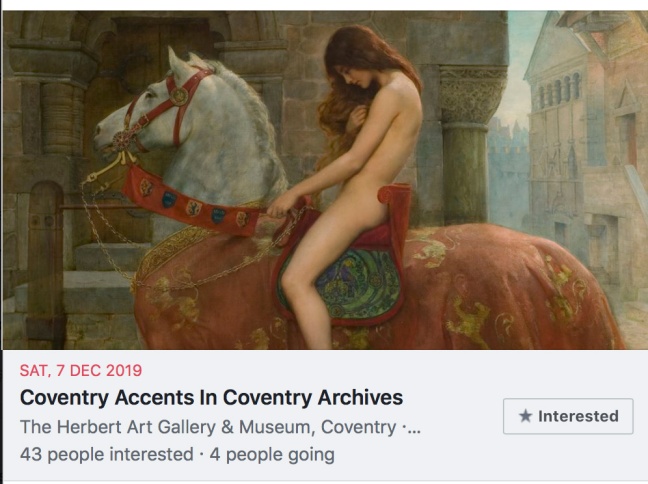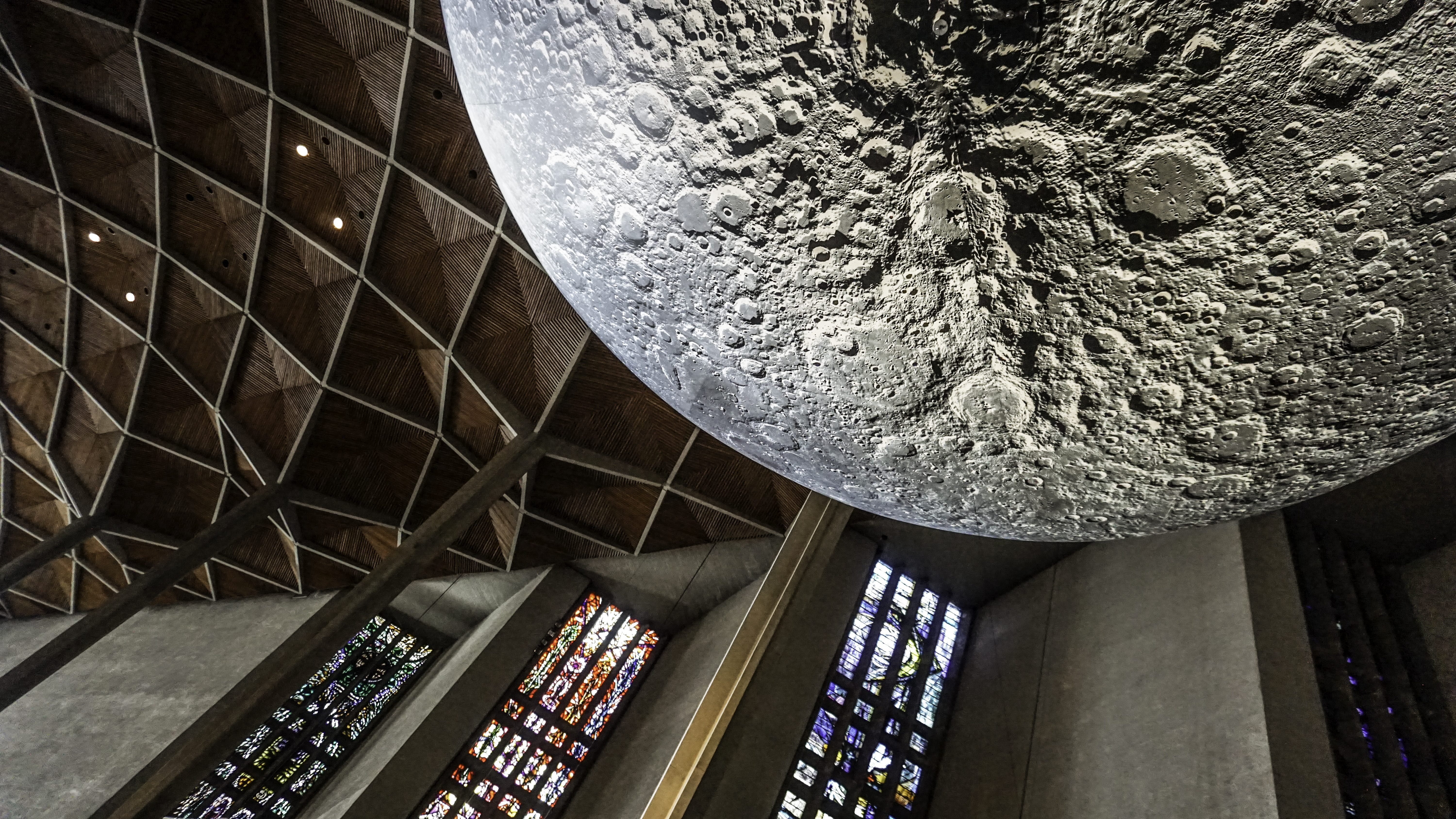Testing, testing – one, two, three…
After much researching I finally decided to order a set of the Roland CS-10EM binaural microphones/headphones to do my first test recording with.

As I don’t have a dummy head to use with the microphones yet I decided to improvise with a candelabra – the width spacing is approximately head width. Positioned at around head height on my fireplace it gave me room to walk around it easily as I narrated a few lines.
Below is the test recording. Please listen with headphones on to experience the full spatial effect.
https://vimeo.com/sparkleyes/review/440461926/0eeee28a40
I have to say I’m really impressed with the mics so far, especially as this recording was a very first trial run. You can very clearly hear my voice travelling from the right ear to the left and tell when I am right next to your ear or further away.
If I can record inside an actual pantry or wardrobe, similar to where my story is set, I think the audio recording will clearly illustrate the enclosed space, highlight the proximity of each character and can be used to great effect to heighten tension and emotion as the narrative unfolds.
Post-War sweets & ‘Unclaimed Babies’

Writing a piece set in Coventry in the early 1920s was guaranteed to need thorough research into the history of the city, but I didn’t realise it would also lead me to researching confectionery from that time period too.
After a lot of reading I’ve discovered that this particular decade gave us many sweets we still enjoy today including; Fruit Salads, Black Jacks, the Cadbury’s Flake, Sherbet Fountains and the classic Fruit and Nut bar.
I’ve also learnt about the rather unusual history of Jelly Babies, alleged to have been invented back in 1864 when a badly made jelly bear mould resulted in confections that looked more like toddlers and so was christened with the unlikely name, ‘Unclaimed Babies’. Although this sounds like a terrible marketing move now, historians assure us that back in Victorian times it wouldn’t even have raised an eyebrow:
“Unclaimed babies were a part of life back then – people would leave them on church steps and it’s possible that people even found the name amusing,”
Tim Richardson, Sweets: A History Of Temptation.
There’s much discussion around Unclaimed Babies becoming ‘Peace Babies’ in the 1920s, possibly to celebrate the end of World War One, and there are certainly images of Victorian packaging showing ‘Victory Babies’, along with adverts listing “dollies” and “totties” for sale.
Whatever you like to call them, I’m sure you can guess what I’m now wishing I had in the cupboard 🙂
Resources to thank:
Coventry Colliery
I’ve recently reached out to David Fry from the Coventry Society to find out a little more about the history of Coventry Colliery. Unfortunately due to lockdown he currently doesn’t have access to his postcard collection to share any visuals with me for a while yet, but he was able to share some great information with me and point me in the direction of some brilliant research resources.
Research links:
https://www.aditnow.co.uk/Mines/Coventry-Coal-Mine_8793/
“Wyken Collieries Ltd had started to extract coal from coal seams within the Warwickshire Coalfield from 1862, across three mining developments in North Warwickshire:[1]
- Wyken Colliery: served by the Oxford Canal, in 1862 the London and North Western Railway built a short connecting mineral railway to its own Coventry to Nuneaton Line. This mine was worked out by 1881
- Alexandra Colliery: started at the same time as the Wyken, it was also served from the same LNWR railway. Miners moved to this pit after the closure of the Wyken, but it too became exhausted by 1919
- Craven Colliery: started after the other two mines, it also was served by the same LNWR branch
In 1902, the company commenced trial excavations at Keresley north of Coventry, and soon discovered a viable coal seam. The sinking of a new mine was sanctioned by an Act of Parliament, but not started due to economic problems.”
Above extract from: https://en.wikipedia.org/wiki/Coventry_Colliery
https://www.ourwarwickshire.org.uk/content/subject/mines
https://www.coventrytelegraph.net/lifestyle/nostalgia/look-back-coventry-colliery-12650553
https://api.parliament.uk/historic-hansard/commons/1963/feb/21/coal-mining-coventry-subsidence
T glottaling and H dropping

To try and make my story as authentic as possible I have not only been looking into the history of our city but also at how Coventry’s accent has changed over time.
In December, last year, I attended a talk at the Herbert Art Gallery’s Archives with Dr. Christopher Strelluf, a sociolinguist at Warwick University, who played us a beautiful selection of local sound recordings from the archive’s collection so we could hear exactly what Coventry’s accent sounded like many years ago.

The recordings we heard varied from some very strong accents, that you had to really listen carefully to decipher, to a dialect much closer to the Coventry accent of today, but with a definite Black Country twang.
Dr. Strelluf pointed out particular words, sounds, and grammatical features that are very specific to the Coventry accent in the past and how some of those features still remain in today’s local dialect.
Back in the 1920’s T glottaling and H dropping were very common.
If you’ve not heard of t glottaling before then this video below explains it far better than I can hope to: https://www.youtube.com/watch?v=sHaN4jHBGVk
Binaural recording equipment
I’ve been looking at several different techniques for binaural recording from budget ideas using acupuncture ears and inner ear microphones up to a 6.3k dummy head mic system.
Below you can see the budget system in action. I really like the sound of this and it appeals to the maker in me, putting the whole thing together, plus i am intrigued to see what acupuncture ears look like in real life!
This is the mid range kit which you can get from around £400 – £700
And this is the kick ass 6k Neumann rig:

Binaural recording examples
Here are a few great examples of how binaural recording has been used.
Please wear headphones to listen to these.
I found that whilst listening to some of these recordings I experienced a little queasiness/disorientation at points which I think comes from moving too quickly from one sound direction to the next, so I need to be aware of this in my recordings.
This effect could be used to great effect when brought in at the right times but shouldn’t be an unwanted side effect.
Virtual Nest Residency

So excited to let you know that I have been accepted by Talking Birds for their Virtual (Fledgling) Nest Residency which offers support and mentoring to artists developing a new project.
During lockdown I have been drawn to revisit a piece of creative writing I drafted a few years ago entitled, Hide and Seek; a short drama which tackles themes of confinement and domestic abuse.
I’d always hoped to develop the work and now feels like an important time to do so, within the context of the coronavirus lockdown.
Over the past month I’ve been taking part in a virtual documentary sound workshop with experienced artist, Duncan Whitley, developing my field recording skills. Duncan recently introduced me to the technique of binaural recording used alongside head tracking. This technique seemed the perfect partner to my written piece and would allow me to totally immerse my audience in the setting and situation.
Ideally, if all goes well, I am planning to reconfigure this piece of writing as an experimental immersive audio drama, performed by actors, captured in 3D audio and played back via headphones, to be exhibited during Coventry UK City of Culture 2021.
During my Fledgling Nest Residency I hope to experiment with different types of binaural sound recording – as it is a totally new technique to me – continue adapting my script and explore how I can ensure the final piece I produce is as accessible as possible to all.
Take a moment
During my recent field recording work, capturing the Clap for Carers audio every Thursday, I have really become aware of the sounds of nature ‘in my own back yard’.
Below is an early morning sound recording captured in my garden and added to some video captured in the same garden later that day.
Documentary Sound Workshops
At the end of March 2020 I answered a call out from sound artist Duncan Whitley who was attempting to collate some local documentation of the “Clap for Carers” events, which were happening each week across the UK, to potentially form part of his Phoenix City project about Coventry’s relation to the phoenix (http://duncanwhitley.net/phoenix-city-2021).
I’d met Duncan before through Coventry Biennial, and greatly admired his work, so jumped at the chance to learn from someone with a wealth of sound recording experience and to find something challenging to occupy the extra time I had on my hands due to lockdown.
I’d worked recording audio for short films and experimented with recording my own foley samples before but I had done little ‘true’ field recording work. Over video call Duncan taught me how to set up my Zoom H6 to record with the RAW side mic settings, to capture the best quality sound for the situation, and offered some tips for capturing audio in what we hoped would be a noisy street.
I wasn’t quite sure what to expect on that first Thursday night on 26th March. I’d seen quite a few posts on Facebook promoting the Clap for Carers idea but I still wasn’t sure anyone in my street would actually come out.

I set up my recorder from a front bedroom window, put my headphones on and waited. By 7:55 I could already hear neighbours gathering and beginning to talk and I wished I’d set my equipment up sooner. By 8pm there were people banging pots and pans, cheering, fireworks going off a few streets away, a solitary car driving past giving a solidarity toot of the horn and even two people arguing.
The following week I decided to try recording from the back garden and set up well in advance so I could capture the atmosphere before, with the sounds of everyone coming out of their houses, this time.
This worked really well and I managed to capture the sounds of children bouncing on a trampoline in their garden and laughing, swifts singing as they flew above me and a crow being startled out of a tree when the clapping finally started. There were more pots and pans, louder cheering, extra fireworks and more conversation between neighbours, as they lingered for a little longer after the clapping ceased.
There were 3 other artists recording audio in different areas of the city each week and we would all meet via Zoom to listen back to what we had captured and to talk about our different experiences as part of a weekly Documentary Sound Workshop. It was amazing to hear the stories of each street and as the weeks went on it was as if each developed it’s own personality. The audio painting a picture of the inhabitants of each street and the atmosphere of the street itself.
It was great to have the opportunity to discuss what we had captured, learn from one another and from our mistakes. Each week Duncan would offer advice and introduce us to films and audio pieces to listen to and help us to fine tune our recording techniques. Two of my favourite pieces were Lucy Cash’s short film “A Song for Nine Elms”, and Duncan’s recording of the double-demolition, using controlled explosives, of two high-rise tower blocks named Rachel and Rathbone on the Downs Estate in Hackney, London back in 2013. Recorded in 3 segments, each captures their own unique part of the buildings’ final history.
Below is a stacked recording of the Clap For Carers audio I gathered from 26th March 2020 until 28th May 2020.
Each recording has been progressively overlaid to create one final accumulative edit, which hopes to encapsulate and convey the atmosphere of the event over a two month time period.
As I mentioned at the beginning of this post, I was quite grateful to have something to distract myself from the pandemic and the isolation of lockdown, and as the project continued I was encouraged to experiment with other audio recordings and soon found myself getting up at 5am just to capture the sound of birdsong. As someone who has always enjoyed those ‘5 more minutes’ of shut eye in the morning this was a rather unexpected side effect.
Working on new projects in, a somewhat self-imposed, confinement also led me to revisit a piece of creative writing I had drafted a few years ago entitled, Hide and Seek; a short drama which tackles themes of confinement and domestic abuse.
I’d always hoped to develop the work and lockdown felt like an important time to do so.
I shared the work with Duncan explaining I’d like to record it as an audio piece and he introduced me to the technique of binaural recording, used alongside head tracking, suggesting it could be the perfect way to listen to the work and would fulfil my wish to totally immerse my audience in the stories setting and character’s situation. He also suggested I apply for help developing the work through a further workshop or residency and this encouragement led to me apply, and be accepted for, a Virtual Nest Residency with Talking Birds, which offers support and mentoring to artists developing a new project


